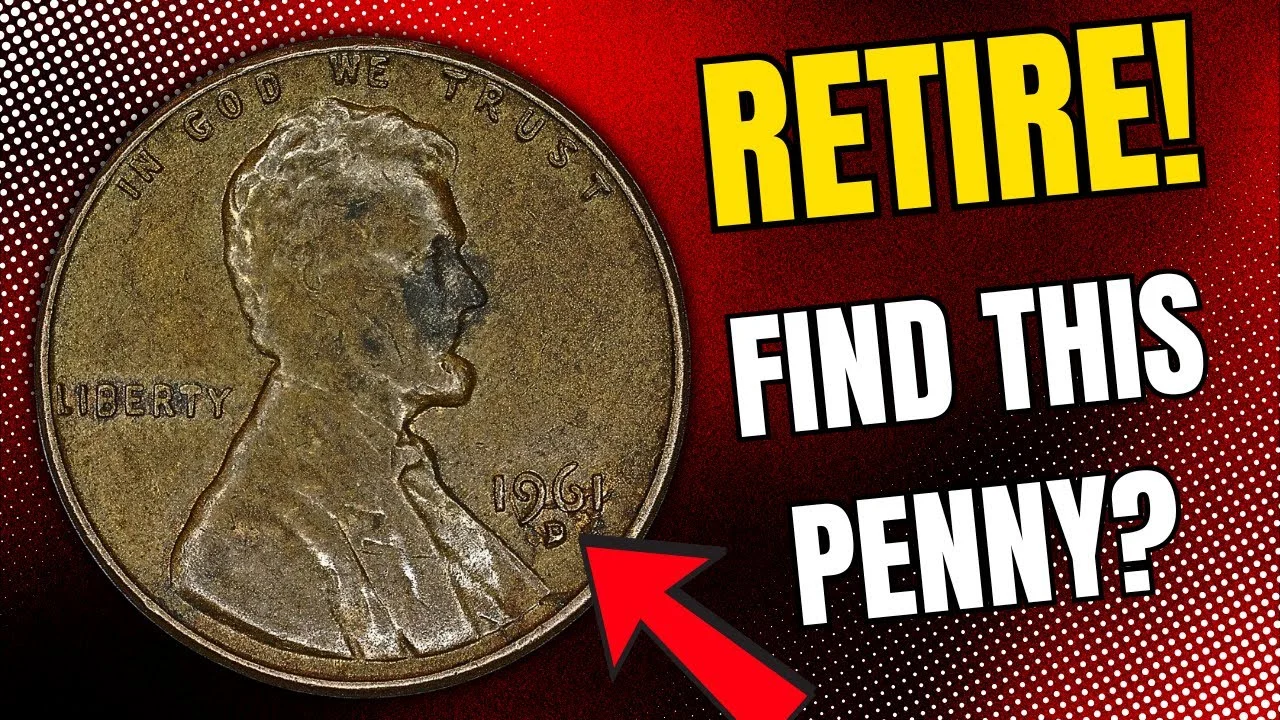The Lincoln Wheat Penny Worth $21 Million: The Lincoln Wheat Penny is one of the most iconic coins in U.S. history, cherished by collectors for its historical significance and potential hidden value. But could a penny worth $21 million still be in circulation today? Let’s explore the fascinating story behind this rare coin, how to identify it, and whether you might stumble upon one in your pocket change.
The Legend of the 1943 Bronze Lincoln Penny
Most Lincoln Wheat Pennies minted between 1909 and 1958 are made of 95% copper and 5% zinc or tin. However, in 1943, due to World War II copper shortages, the U.S. Mint switched to steel-coated zinc pennies to conserve copper for military use.
But a few 1943 pennies were mistakenly struck in bronze instead of steel. These rare coins are among the most valuable in numismatic history, with one selling for $1.7 million in 2010 and another reportedly valued at $21 million in private sales.
Why Is the 1943 Bronze Penny So Valuable?
-
Extreme Rarity: Only 10 to 15 are confirmed to exist.
-
Historical Error: They were never supposed to be made.
-
High Demand: Collectors and museums compete for these coins.
Could a $21 Million Penny Still Be in Circulation?
The chances of finding a 1943 bronze penny in everyday change are extremely slim, but not impossible. Here’s why:
Unaware Owners: Some people may not recognize its value and spend it as a regular penny.
Hidden Collections: Old coin jars or inherited collections might contain one.
Counterfeits Exist: Many fake 1943 bronze pennies circulate, so authentication is crucial.
How to Identify a Real 1943 Bronze Wheat Penny
| Feature | 1943 Steel Penny | 1943 Bronze Penny |
|---|---|---|
| Material | Silver-gray (steel) | Brown (copper) |
| Weight | 2.7 grams | 3.1 grams |
| Magnet Test | Magnetic | Non-magnetic |
| Sound Test | High-pitched “ring” | Dull “clink” |
If you find a brown 1943 penny, check these traits carefully before getting too excited—many are altered steel pennies coated in copper.
Other Valuable Lincoln Wheat Pennies
While the 1943 bronze penny is the most famous, other Wheat Pennies can also be worth thousands:
-
1909-S VDB (First year, low mintage) – $1,000+
-
1914-D (Rare Denver mint) – $200+
-
1922 No D (Missing mint mark) – $500+
-
1955 Double Die (Striking error) – $1,000+
Final Thought: Should You Keep Searching?
The idea of finding a $21 million penny in your spare change is thrilling, but the odds are astronomically low. However, checking your old coins is still worthwhile—you might discover a rare Wheat Penny worth hundreds or even thousands.
If you think you’ve found a 1943 bronze penny, get it authenticated by a professional coin grader (PCGS or NGC). Even if it’s not the fabled $21 million coin, it could still be a valuable treasure!
FAQs About the 1943 Bronze Wheat Penny
1. How many 1943 bronze pennies exist?
Only 10 to 15 are confirmed, making them one of the rarest U.S. coins.
2. How can I tell if my 1943 penny is bronze?
-
It should be brown, not silver.
-
It should not stick to a magnet.
-
It should weigh 3.1 grams (not 2.7g like steel pennies).
3. What’s the most a 1943 bronze penny has sold for?
A 1943-S bronze penny sold for $1.7 million in 2010. Private sales may reach higher.
4. Are all 1943 pennies valuable?
Only the bronze ones are. Regular steel 1943 pennies are common and worth 10¢ to 50¢.
5. Could I still find one in circulation?
It’s very unlikely, but always check your change—you never know!
Conclusion
The 1943 bronze Lincoln Wheat Penny is a numismatic legend, with rumors of a $21 million specimen fueling collectors’ dreams. While finding one in circulation is improbable, the hunt itself is part of the fun. So next time you get a handful of pennies, take a closer look—you might just hold a fortune in your hand!




